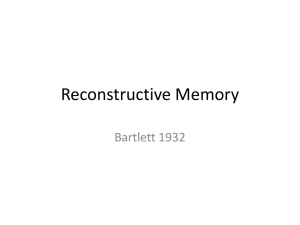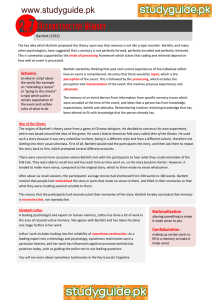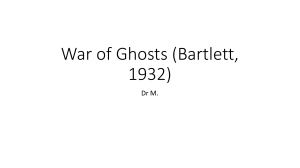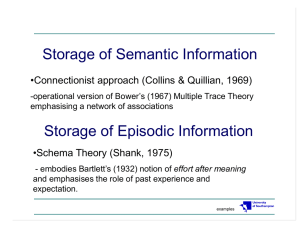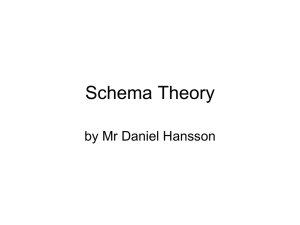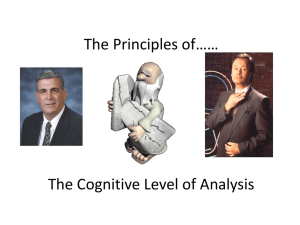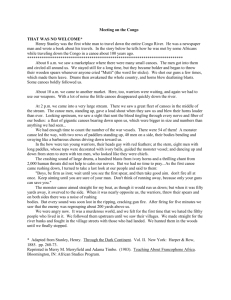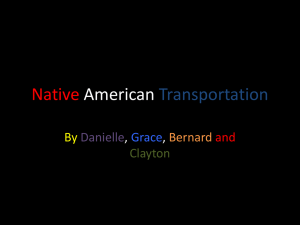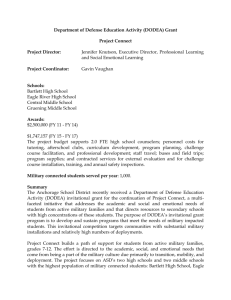Reconstructive Memory: Bartlett's Schemas & EWT
advertisement
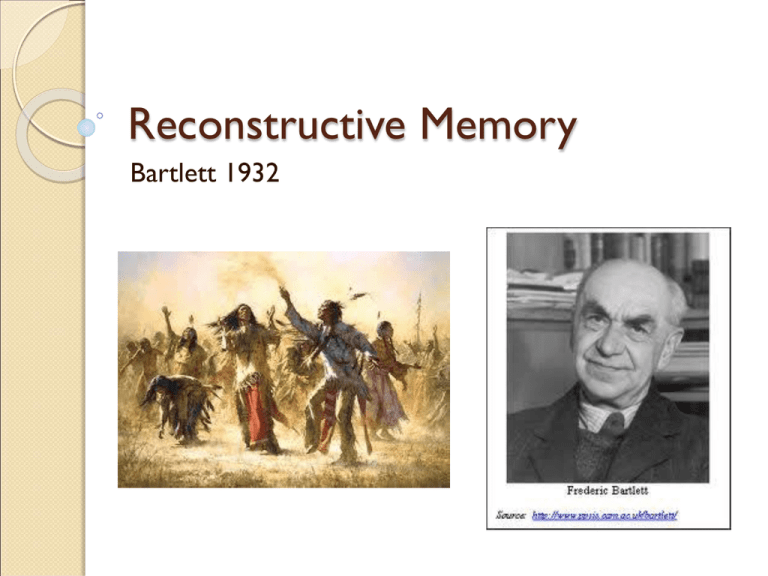
Reconstructive Memory Bartlett 1932 Schemas Reconstructive Memory - Bartlett (1932) Bartlett's theory of Reconstructive Memory is crucial to an understanding of the reliability of eye witness testimony (EWT) as he suggested that recall is subject to personal interpretation dependent on our learnt or cultural norms and values- the way we make sense of our world. We tend to see and interpret and recall what we see according to what we expect and assume is 'normal' in a given situation. Bartlett referred to these complete mental pictures of how things are expected to be as Schemas. These schemas may, in part, be determined by social values and therefore prejudice. Memory is an active process... Schemas are therefore capable of distorting unfamiliar or unconsciously 'unacceptable' information in order to 'fit in' with our existing knowledge or schemas. This can, therefore, result in unreliable eyewitness testimony. Bartlett tested this theory using a variety of stories to illustrate that memory is an active process and subject to individual interpretation or construction. Native American Canoes The War of the Ghosts The War of the Ghosts. One night two young men from Egulac went down to the river to hunt seals, and while they were it became foggy and calm. Then they heard war cries and they thought; 'Maybe this is a war-party.' They escaped to the shore, and hid behind a log. Now canoes came up, and they heard the noise of paddles and saw one canoe coming up to them. There were five men in the canoe and they said; 'What do you think? We wish to take you along. We are going up the river to make war on the people.' One of the young men said; 'I have no arrows.' 'Arrows are in the canoe,' they said. 'I will not go along. I might be killed. My relatives do not know where I have gone. But you,' he said, turning to the other, 'May go with them.' So one of the young men went, but the other returned home. And the warriors went on up the river to a town on the other side of Kalama. The people came down to the water and began to fight, and many were killed. But presently, one of the young men heard one of the warriors say; 'Quick let us go home. That Indian has been hit.' Now he thought; 'Oh, they are ghosts.' He did not feel sick, but he had been shot. So the canoes went back to Egulac, and the young man went back to his house and made a fire. And he told everybody and said; 'Behold, I accompanied the ghosts, and we went to fight. Many of our fellows were killed and many of those that attacked us were killed. They said I was hit, but I did not feel sick.' He told it all, and then he became quiet. When the sun rose, he fell down. Something black came out of his mouth. His face became contorted. The people jumped up and cried. He was dead. According to Bartlett your recall will show a westernised interpretation of this American Indian folk tale thus illustrating your subjective memory construction rather than accurate objective recall of events. We fit information into our all ready existing schema. How might this idea be applied to eyewitness testimony of criminal occurrences ?
